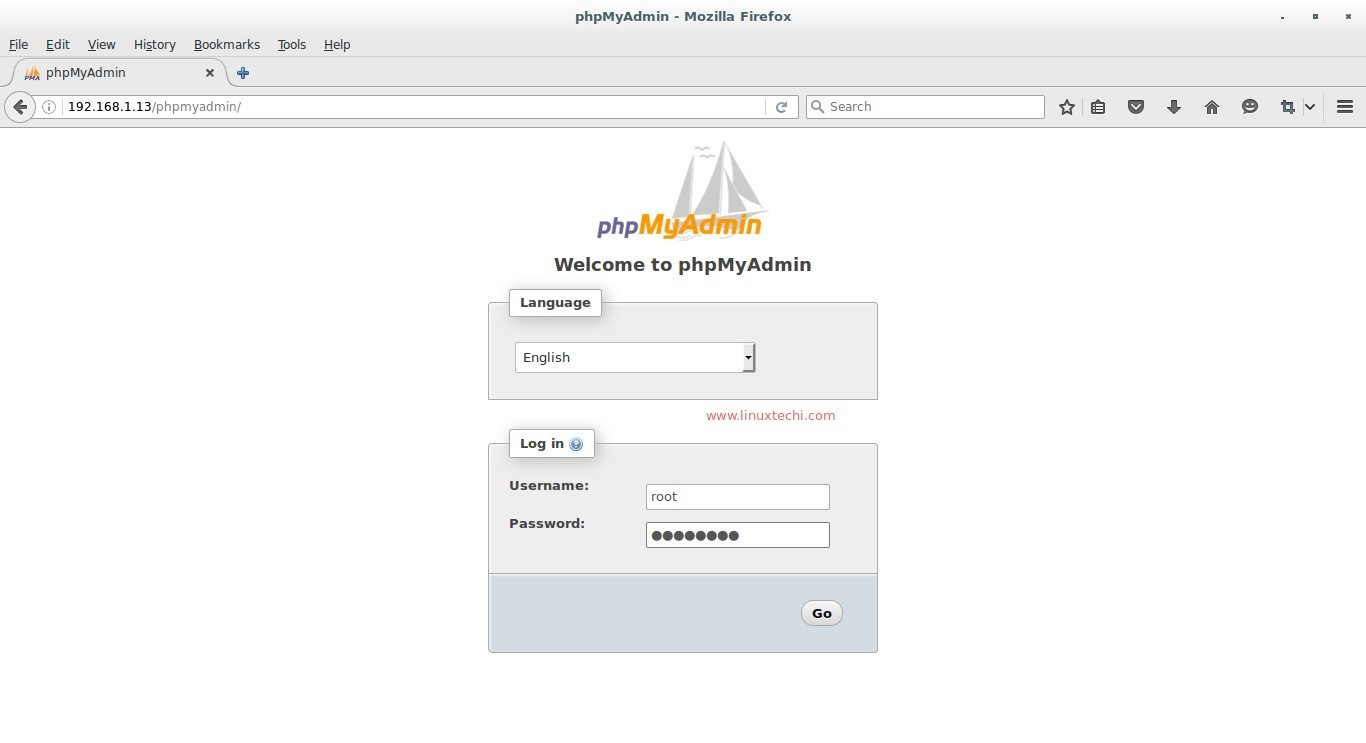

Install phpMyAdmin by using the following command: apt-get install php phpmyadmin > Processing Dependency: php-php-gettext for package: phpMyAdmin-4.4.15. > Processing Dependency: php-tcpdf for package: phpMyAdmin-4.4.15. > Processing Dependency: php-tcpdf-dejavu-sans-fonts for package: phpMyAdmin-4.4.15. > Processing Dependency: php-xmlwriter for package: phpMyAdmin-4.4.15. > Processing Dependency: php-gd >= 5.3.7 for package: phpMyAdmin-4.4.15. > Processing Dependency: php-mbstring >= 5.3.7 for package: phpMyAdmin-4.4.15. > Processing Dependency: php-mysqli >= 5.3.7 for package: phpMyAdmin-4.4.15. > Package phpMyAdmin.noarch 0:4.4.15.10-3.el7 will be installed Loading mirror speeds from cached hostfile The output should be similar to the following example: Loaded plugins: fastestmirror, langpacks Install phpMyAdmin by using the following command: yum install phpmyadmin

Use the instructions in the following sections to install phpMyAdmin. Use the following command to check whether PHP is installed on the Ubuntu operating system: dpkg -l | grep php

Use the following command to check whether PHP is installed on CentOS Use the commands in the following table to check whether a web server is A web server, such as Apache® or NGINX®.Web server for CentOS® 7, Red Hat® Enterprise Linux® (RHEL) 7, andīefore you can install phpMyAdmin, you must have the following installed
#Ubuntu install phpmyadmin apache how to
This article describes how to install and configure phpMyAdmin on your PhpMyAdmin has become one of the most popular MySQL administration tools, As a portable web application written primarily in PHP, PhpMyAdmin® is a free and open source administration tool for MySQL®Īnd MariaDB®.


 0 kommentar(er)
0 kommentar(er)
